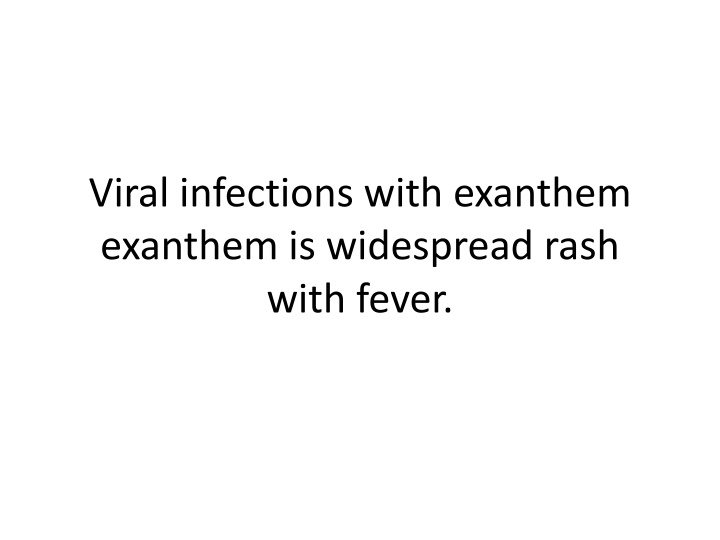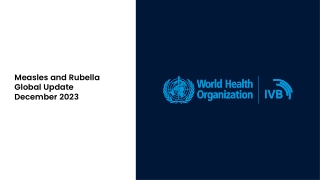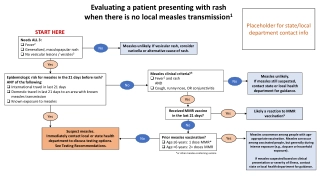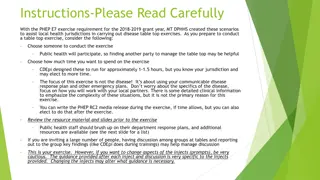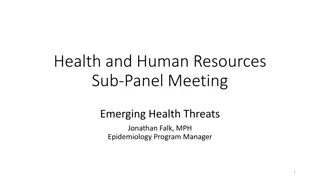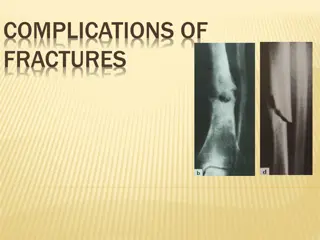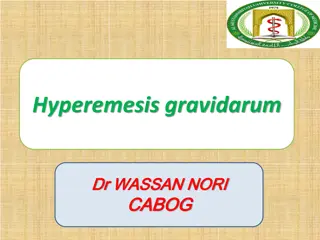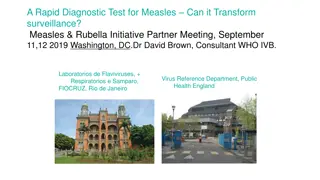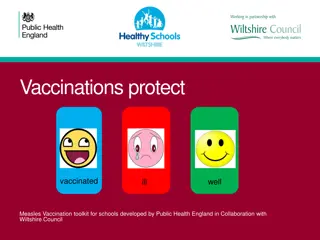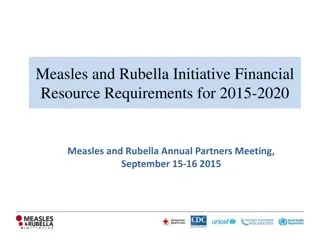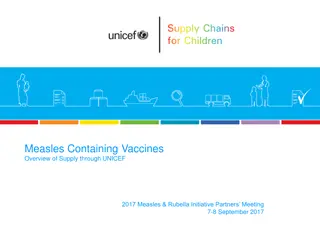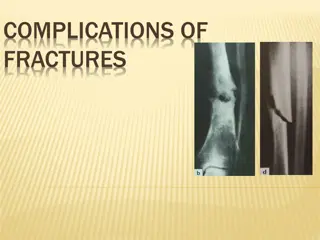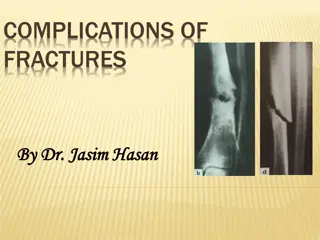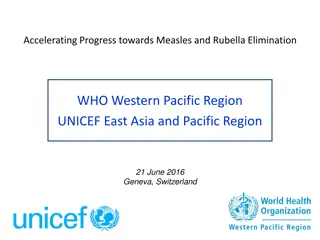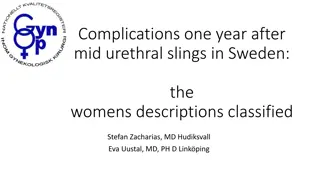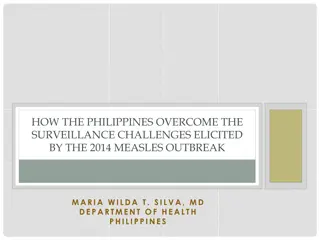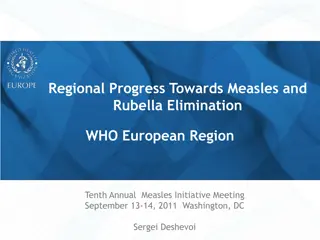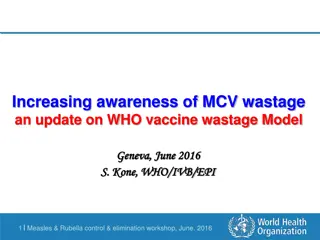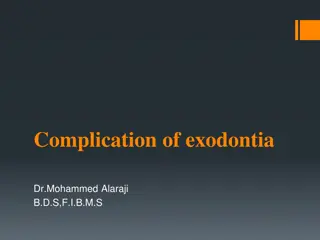Measles: Symptoms, Complications, and Management
Measles, also known as rubeola, is a viral infection characterized by a widespread rash, high fever, and specific symptoms like Koplik spots. Complications, diagnosis methods, and preventive measures, including the MMR vaccine, are discussed in detail. Recognizing the signs, managing the disease with supportive care and immunoglobulins, and preventing spread are crucial aspects covered in this informative content.
Download Presentation

Please find below an Image/Link to download the presentation.
The content on the website is provided AS IS for your information and personal use only. It may not be sold, licensed, or shared on other websites without obtaining consent from the author.If you encounter any issues during the download, it is possible that the publisher has removed the file from their server.
You are allowed to download the files provided on this website for personal or commercial use, subject to the condition that they are used lawfully. All files are the property of their respective owners.
The content on the website is provided AS IS for your information and personal use only. It may not be sold, licensed, or shared on other websites without obtaining consent from the author.
E N D
Presentation Transcript
Viral infections with exanthem exanthem is widespread rash with fever.
Measles(robeola) 1-the incubation period 7-14 days 2-high fever is the first sign last 4-7 days 3-prodromal phase :fever ,anorexia and classical triad of conjunctivitis, cough and coryza(3c),photophobia,periorbital edema and myalgia may occurred. 4- the characteristic enanthem generally appears 2-4 days after the onset of the prodrome and last 3-5 days(koplik spots) can be seen inside the cheeks during the early stage.it is pathognomonic but its absence does not exclude the diagnosis.
4- the characteristic enanthem generally appears 2-4 days after the onset of the prodrome and last 3-5 days(koplik spots) can be seen inside the cheeks during the early stage.it is pathognomonic but its absence does not exclude the diagnosis.it is defined as grains of sound on a red base appeared on a buccal mucosa apposite the second molars .
5-the exanthema usually appears 1-2 days after the appearance of koplik spots,the rash is maculopapular starting on face and upper neck and spreading to the extremities ,the entire course of uncomplicated measles from late prodrome to resolution of fever and rash is 7-14 days.
complications They are more common in adults especially pregnant ,malnourished and immunocompromised patients: 1-otitis media 2-bacterial pneumonia 3-Transient hepatitis 4-Encephalitis(0.1%) Subacute sclerosing panencephalitis(sspe)which is rare complication and late occurred after 7 years.
Diagnosis is clinical and by detection of antibody (IgM) in serum or saliva or by PCR OR VIRAL CULTURE. Death occurred from bacterial super infection as complication of measles :pneumonia,diarrhoea and gangrenous stomatitis or encephalitis.
Management: 1-supportive in uncomplicated 2-immunoglobulin given to immunocompromised patients may attenuate the disease if received within 6 days. 3-vitamin A 4-antibiotic is reserved for bacterial infection.
Prevention. MMR is lived attenuated vaccine that is contraindicated in immunocompromised patients If patient with TB it should be deferred until completion of anti TB therapy. Measles give life long immunity.
Rubella(german measles) 1- it spread by respiratory droplets. 2-infectivity from up to 10 days before to two weeks after rash. 3- it usually sub clinical in adults.
Clinical features: 1- fever 2-maculopapular rash spreading from face. 3-lymphadenopathy. 4- in adults especially women arthritis is relatively common ,this enter in differential diagnosis of undifferentiated arthritis the most important of this is rheumatoid arthritis.
Congenital rubella. Laboratory confirmation is required if there has been contact with pregnant women because rubella virus had the potential for trans placental transmission and severe congenital malformations occurred, this is achieved by detection of igM against rubella in serum or by IgG seroconversion,in the exposed pregnant absence of specific rubella igG confirm the potential for congenital infection. Congenital rubella is risk for diabetes mellitus.
prevention 1- all children should be immunized as for measles by MMR. 2-all children of childbearing age should be tested for rubella and vaccinated if seonegative.
